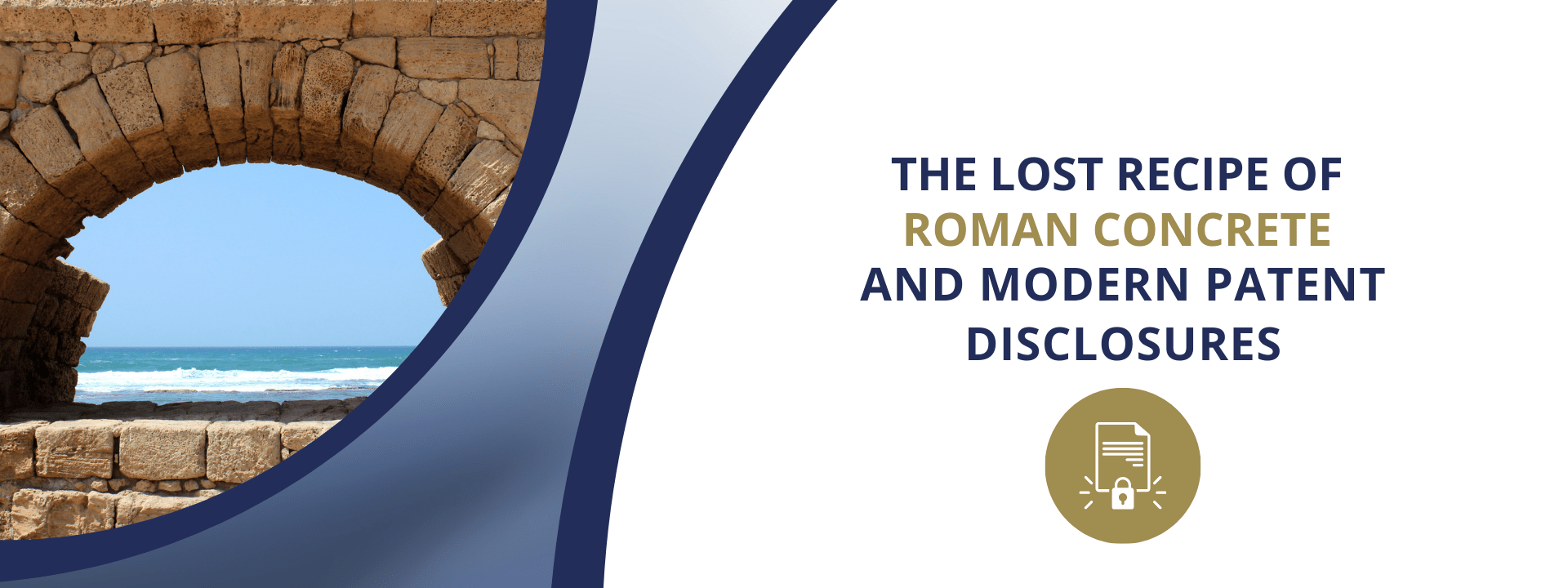The Impact of Roman Concrete on Modern Engineering
Ancient Roman concrete is legendary for its durability, particularly in marine environments. This concrete has withstood the test of time, while many modern structures deteriorate within decades. Understanding the reasons behind this longevity has not only provided insights into ancient engineering but also highlighted the importance of precise disclosure in modern patent filings.
The Composition of Roman Concrete
Roman concrete, also known as opus caementicium, was made from a mixture of volcanic ash, lime (calcium oxide), and seawater. This mixture created a mortar. When combined with chunks of volcanic rock (the aggregate), it formed a material far superior to modern Portland cement in marine environments.
When seawater percolated through the concrete, it dissolved components of the volcanic ash and facilitated the growth of new minerals, such as aluminous tobermorite and phillipsite. These minerals formed interlocking crystals that reinforced the concrete and prevented cracks from propagating. This continuous chemical interaction over centuries made Roman concrete stronger as it aged (Unews) (Earth.com).
Missteps in Modern Re-creation
Modern attempts to recreate Roman concrete often failed because they did not use seawater, a critical component. Early researchers substituted fresh water for seawater, not realising that this substitution prevented the essential chemical reactions from occurring. Without seawater, the pozzolanic reaction did not produce the same durable minerals, leading to concrete that did not achieve the longevity of its ancient counterpart (Ancient Origins) (The HISTORY Channel).
Marie Jackson and her colleagues at the University of California, Berkeley, were among the first to uncover the importance of seawater in the formula. Using advanced scientific techniques, such as electron microscopy and x-ray microdiffraction, they demonstrated how seawater facilitated the formation of durable minerals within the concrete. These findings were crucial in understanding why Roman concrete has endured for millennia while modern concrete structures fail (Unews) (Open Culture) (ScienceDaily).
The Importance of Precise Disclosure in Patents
The failure to recreate Roman concrete accurately underscores the importance of precise disclosure in patent filings. A patent must fully disclose the invention in a manner that enables others skilled in the art to reproduce it. This requirement ensures that the invention can be understood, evaluated, and built upon by others, creating innovation and technological advancement.
The case of Roman concrete serves as a historical lesson in the value of complete and accurate disclosure. Although the Romans did not patent their concrete, their “recipe” was effectively lost for centuries because it was not documented in a way that included all critical components, such as the use of seawater. This omission led to many failed attempts to recreate the material and delayed the potential benefits of this ancient technology being applied to modern engineering (ALS) (Archinect).
Modern Implications and Environmental Benefits
Rediscovering the secrets of Roman concrete has significant implications for modern construction, particularly in marine environments. Modern Portland cement, the most widely used concrete, deteriorates quickly when exposed to seawater due to destructive alkali-silica reactions. In contrast, Roman concrete thrives in such conditions, offering a more durable and sustainable alternative (ALS) (Earth.com).
Moreover, the production of Portland cement is a major contributor to carbon dioxide emissions, accounting for approximately 7% of global industrial CO2 emissions. Roman concrete, which uses volcanic ash and requires lower temperatures to produce, has a much smaller carbon footprint. Adopting Roman concrete techniques could thus play a role in reducing the environmental impact of construction (The HISTORY Channel)
Conclusion
The rediscovery of Roman concrete illustrates the importance of precise and comprehensive disclosure in patents. The ancient Romans’ omission of seawater in their documented concrete recipes led to centuries of misunderstanding and failed attempts to recreate their durable material. This historical oversight highlights the need for detailed documentation in modern patent filings to ensure that inventions can be accurately reproduced and applied.
As researchers continue to study Roman concrete, there is potential for modern engineering to benefit from these ancient techniques. By understanding and applying the full scope of the Roman recipe, including the critical role of seawater, modern concrete could become more durable, sustainable, and environmentally friendly. This convergence of ancient wisdom and modern technology holds promise for the future of construction and the preservation of our built environment.
In the end, the story of Roman concrete is not just about ancient engineering marvels but also a lesson in the importance of knowledge sharing and the detailed documentation that patents require to advance human innovation.
If you enjoy history and historical stories around patents you may want to read our The Story of The Wind Up Radio or The Whimsical World of Arthur Pedricks Eccentric Patents

